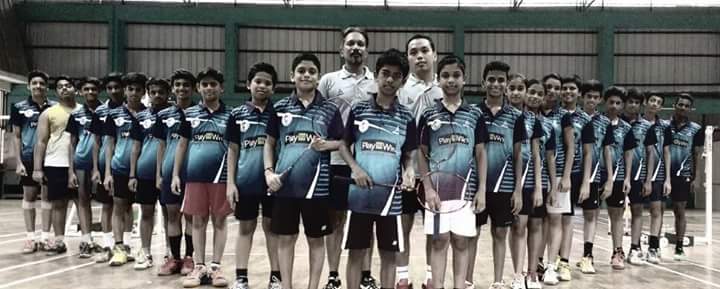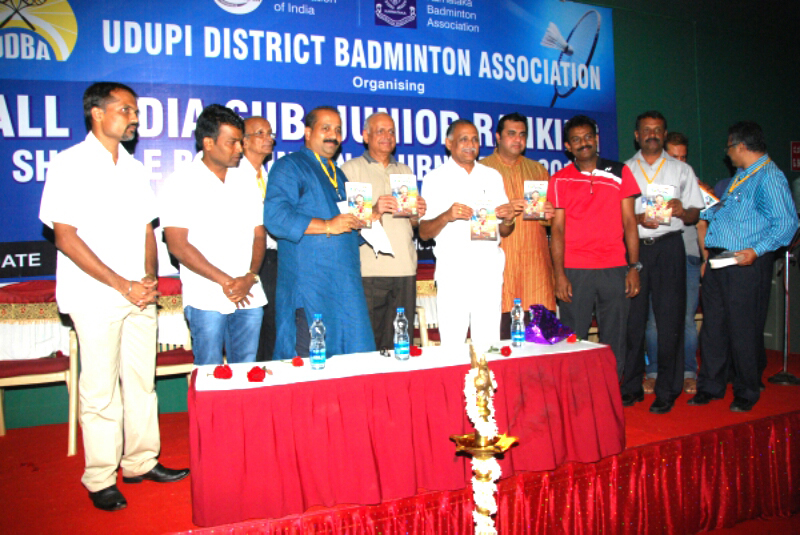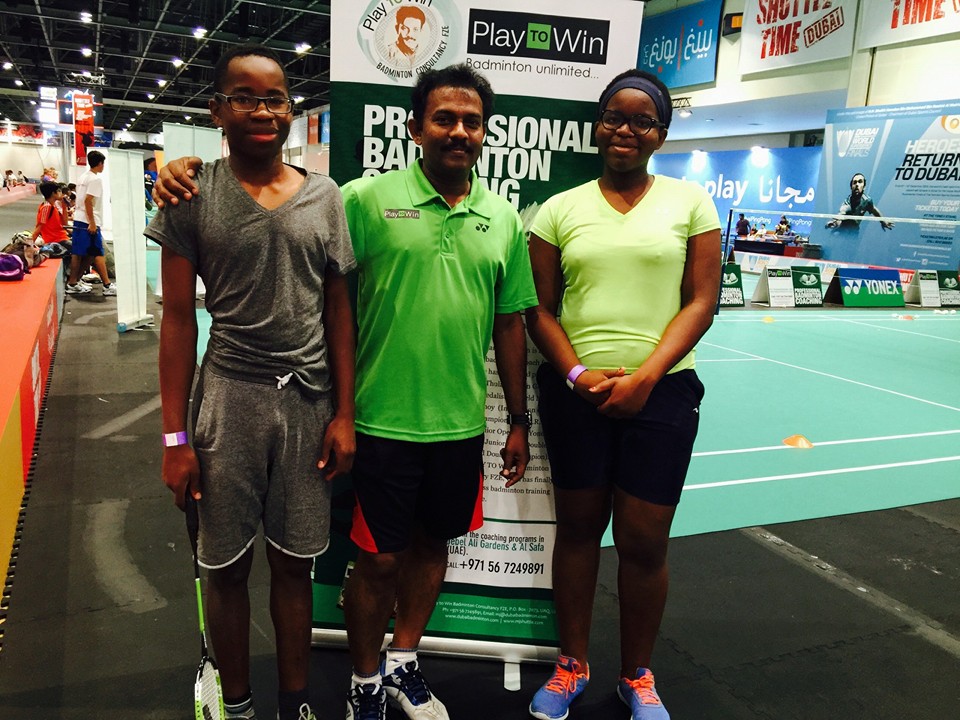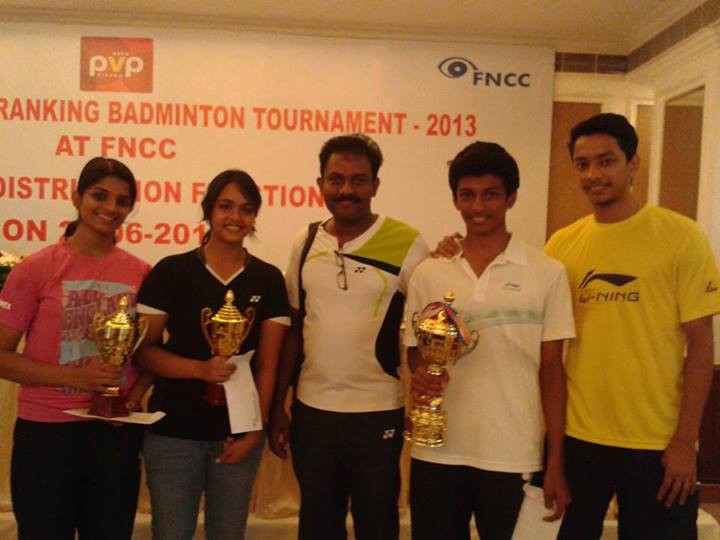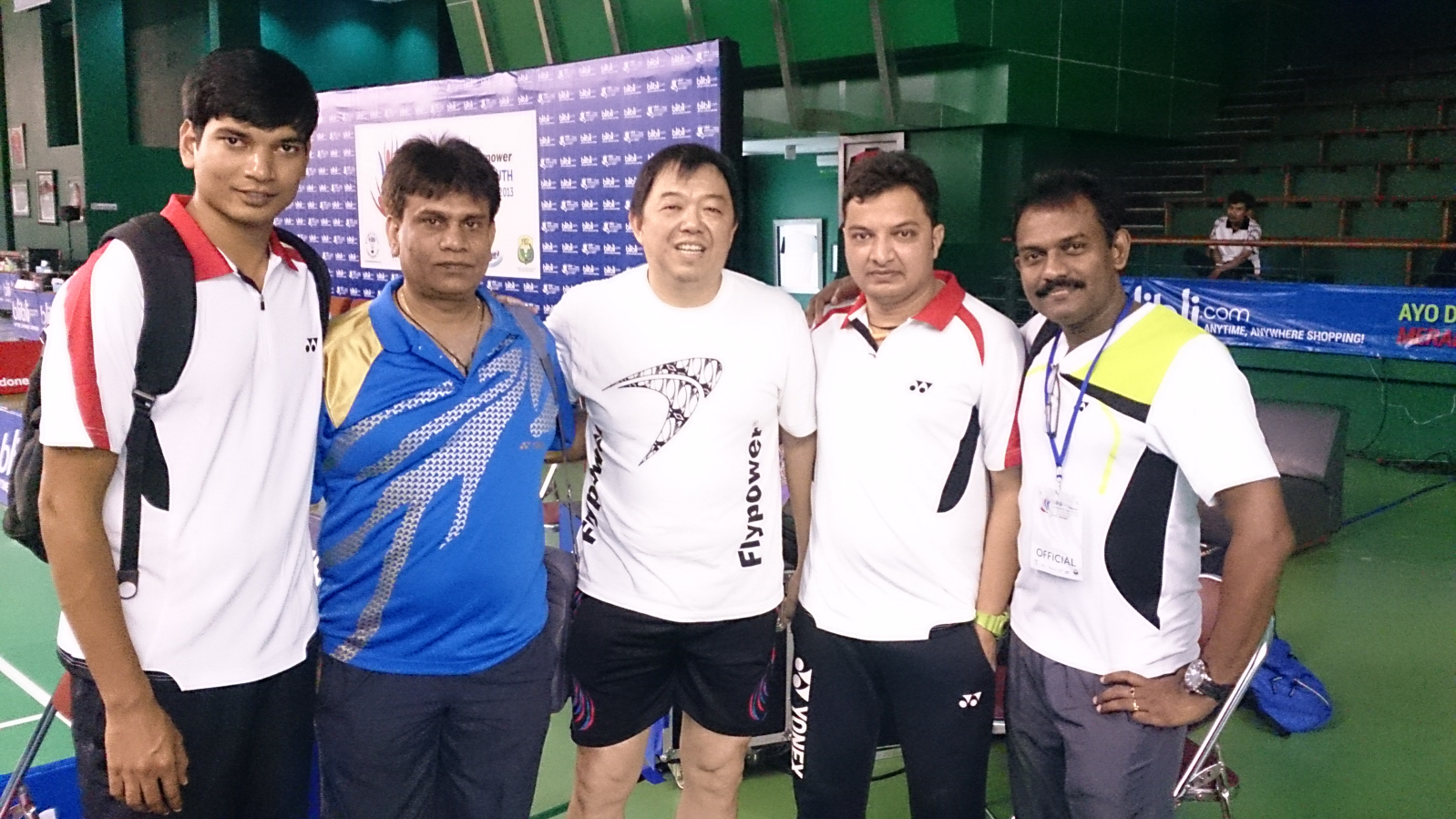Coaches Corner
Mr. M. J. Mohanachandran
What Is Called A Grip
Grip means the way a player hold the racket
Different Type Of Grips
Different types of grips are there, prying pan grip, boxing
grip, doubles grip, back hand grip etc:-
|
Grip
Do not hold grip very firmly with locking of wrist. This will
effect the flow of force to the hand resulting in lack of
angle, direction and length in your strokes and cannot vary the
pace of shots you make. (pic)
|
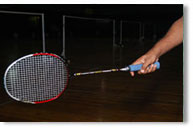
|
It is better to hold the grip with finder tips that is the
pressure points on the fingers. In some occasions, you have
to vary or adjust your grip according to different strokes
and situation. Some time you have to rotate slightly,
mostly, when you have to convert to backhand grip. Should
not hold the racket too loose you may lose control of
racket (pic)
|
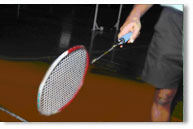
|
How To Hold The Racket(Grip)
Place your right hand (by a right hander) palm on the
stringed face of the racket as shown in the picture ,hold
the racket with left hand keeping the racket bud close to
your body, slowly slide down through the shaft of the
racket towards the handle of the racket in a way to shake
hand with the racket. While holding the racket the first
finger of your hand holding the racket should be little
headed as shown in the fig:. The first finger and thump of
your hand holding the racket should make a “V” shape with
racket handle or shaft. The racket shaft and the hand
position should resemble an arrow head.
|
Training
It is very important for the athletes to religiously follow a well planned out fitness program during the off-season. This will improve their physical strength and boost performance. By following off-season fitness progress a player becomes less prone to injuries. The off season fitness program could be continued during on-season too.
The physical fitness of an athlete is not only limited to a strong body, but it also needs optimal physical functioning. Such high level of physical fitness is possible with a great degree of synchronized tuning of Nero -muscular-skeletal system. Motor skill related fitness is achieved by practicing the set of programs mentioned below.
Warm Up & Cooling Down Program
General warm up :( 10-15 minutes)
Jogging, skipping, static cycling, elliptical trainer etc.......
Mobility Exercise:
Neck rotation, Shoulder swinging, Shoulder circles, Wrist rotation, Trunk flexion, extension, Rotation, Hip rotation, Knee flexion, extension, Foot circles, Static jumping.
Stretching Exercises :
(Hold each stretch for 10-15 sec) Shoulder capsule stretch, Sleep stretch, Biceps, triceps stretch, Forearm-flexor, extensor stretch, Trunk-side stretch, Chest stretch, Upper, lower back stretch, Hip flexors, abductors, adductors, Glutei stretch, Leg-quadriceps, hamstring stretch, Calf muscles stretch.
Cool Down Period :( 20minutes)
Mobility exercises
Static stretching -hold the stretch for 20-30seconds.
Sports Specific Warm-up
Mimic the action of the particular sport several times.
Flexibility Training And Relaxation Techniques:
Flexibility is the ability of a joint to move freely through the full range of motion. by increasing the joint range, the specific muscles around the joint progressively stretch.
Static Stretching: Slow sustained stretching gradually lengthens the muscle through the joint's complete range of motion. This causes the muscle to relax and hence greater length can be achieved.
Relaxation Is Of Great Importance To Any Athlete Striving For Peak Performance.
Relaxation skills can help athletes reduce mental (doubts, worry, etc) and physical anxiety (nausea, shaking etc), while increasing concentration and performance. Relaxation techniques can be used prior to competition or, if practiced enough, during competition. Breath controlled relaxation and blank meditation are some of the common techniques.
Endurance Training:
The aim of endurance training is an athlete is to improve the functional capacity to the maximum for optimal performance. Endurance training works on the principle of over-loading the physiological system of the body. When an athlete is made to rigorously perform under a target much greater than the expected one, it will become easier for him/her to perform during the actual event and achieve the set target without much strain.
Strength Training
To improve strength, the principle of over loading the muscle through properly graded progressive resisted exercise is the rule of thump. it is achieved through these major modes of exercises:
-Bench press: Mainly strengthens deltoid, triceps, and pectoral muscles.
-Half-squats: For quadriceps, glutei, and trunk extensors. - Leg press: co-contraction of quadriceps and hamstring -Lunges: Strengthens hip flexors, glutei quadriceps and leg muscles.
-Power clean: For strengthening the body's major muscles groups (upper extremity, lower extremity, trunk). Power clean is important to improve speed, co-ordination, timing, balance as well as explosive power.
-Power training: Power is a vital ingredient in the game, and coaches are constantly in search of ways to improve power. Power training elicits physiological adaptations in the body. Sports power is best improved by performing strength training movements that 'mimic' sports skills. These movements are ballistic in nature (performed at a high velocity) and rely heavily on the involvement of momentum. A few examples are power clean, snatch and push press or push jerk.
Agility Training:
It develops balance, co-ordination and mobility at a faster pace.
Rope jumping
-combination of forward and backward running
-Zing sag running
-Figure of eight
-Two leg hop, one leg hop
-Carioca
Balance Training:
Balance training improves the stability and stimulates the proprioceptors in the joint. This training is done on balance board and mini trampoline. Balance board consists of unidirectional and multidirectional. Exercises include balancing on various positions, initially on both legs and then on one leg. Position may be maintained with eyes open and closed which further influence proprioception.
Plyometrics
It is a important component of sudden out burst of explosive power. It requires the neuromuscular system to react quickly and at the same time forcefully during stretch shortening actions. The exercises must be done at a fast pace with sudden burst of energy.
Training Videos
+91 944 604 2630 mjshuttledubai@gmail.com


